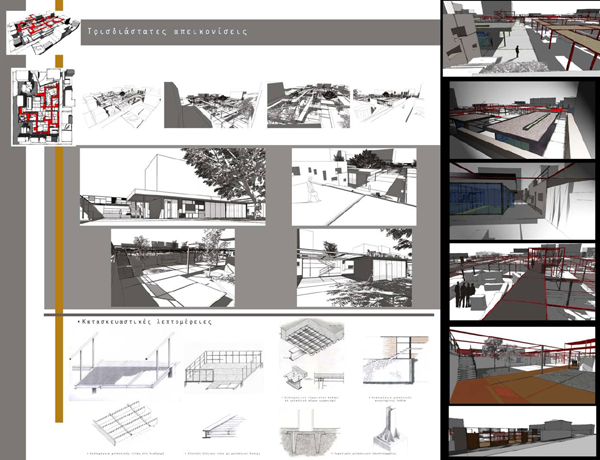STUDENTS PROJECTS
PROJECTS 2011
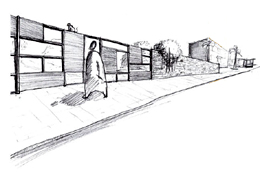
30 January, 2012
Urban intervention in the centre of Argos city;
The enhancement of an archaeological area and its integration into the modern urban fabric.
Students: Salata Aikaterini, Stamatiadou Niki
Supervisors: Polixronopoulos Dimitrios, Gouliaris Panagiotis, Sakantamis Konstantinos
Democritus University of Thrace, department of Architectural Engineering
Date: 28 March 2011
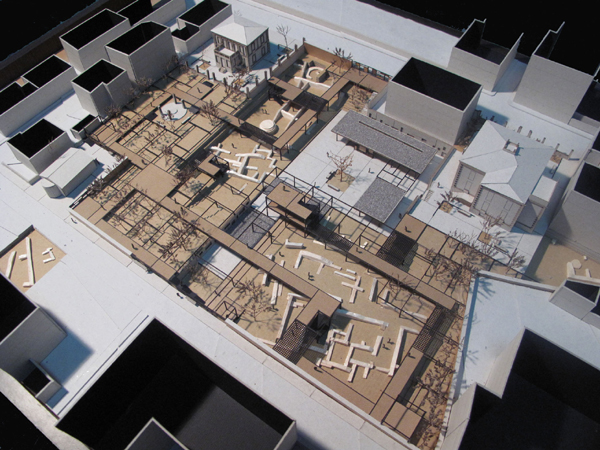
Why Argos?
Being the most ancient Greek city, Argos is only natural to have a significant historical sublayer, parts of which today are being revealed through all the urban web. In spite city's extraordinary archaeological wealth, little have been done to preserve and restore the cultural heritage. Spaces of historical and architectural interest are neglected. Today the city is orga-nized according a development model which seems to ignore the unique characteristics of the residential complex. They have been excluded from people's activities and instead of ensuring the historical and cultural city's consistency, they are scattered through the web, fragmented and incohesive without any connections between them. They are considered to be urban voids, regions downgraded compared to the total environment the urban development has shaped.
Thoughts and considerations
From the ancient to the old and finally to the modern city there is not only a theoretical se-quence from different historical periods but also a visible one. So the historical and architectural traces should be preserved as an authentic evidence of the past which through the years has changed use, from functional to cultural. The archaeological remains are not only fragments from older cities, as a reminder of the past, but also an organic member of the modern city and that's how it should be considered. Therefore the question is if it's possible via architectural interventions, which comply with the modern techniques and serve visitors needs, to convert the cultural heritage into a city's functional part again.
Selecting the study area
As an area of study we selected a section where it has partially been excavated a byzantine residential complex. Even though in the city exist a crowd of more extended archaeological sites with significant findings, this is the only one so close to the modern center.
It is divided in two parts, one belongs in the plot of Trikoupi's residence, an important historical building of 1830, and the other in the plot of Konstantopoulo's House. There is no connection between the two parts as a road is passing through the site.
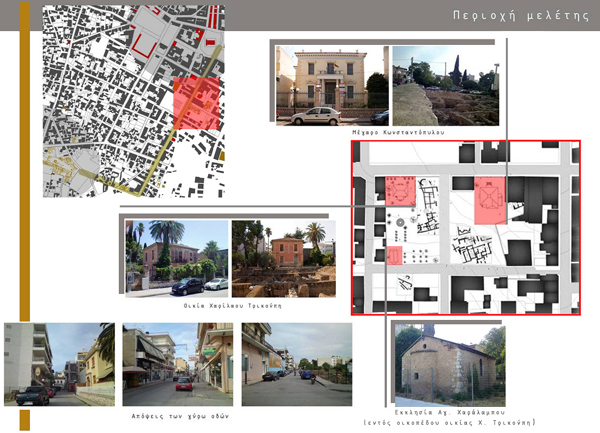
The fencing, a stone wall built by the archaeological department and metal railing, prevent everyone from visiting the site. Furthermore the tall trees make it impossible for everyone to have a view of the archaeological remains.
We have already seen that simply cleaning the sites and restoring the sites is not enough to attract visitors. The historical center should be connected with the modern through a number of projects that will ensure that both will be of equivalent interest.
Designing archaeological site
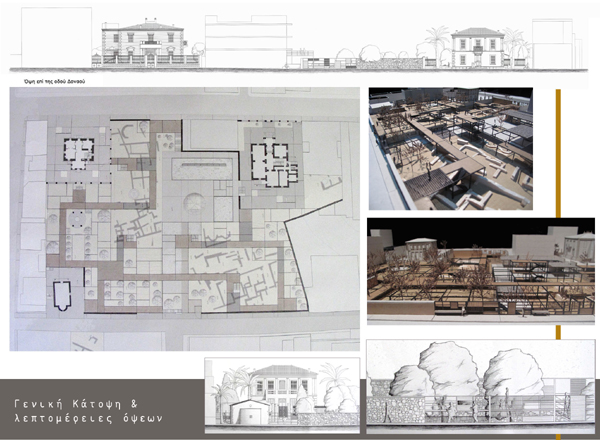
Our goal was to create an open space accessible to everyone which could be a place for resting and observation.
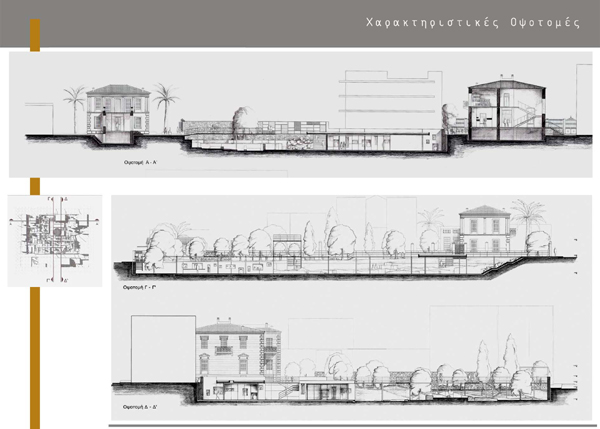
We wanted to design an area that would have strictly clear boundaries but be able to interact with the city. Parts of the stonewalls were kept and got restored, so we wouldn't interrupt city's overview, and metal pieces were added to allow partially viewing of the site. Except of a main entry on Danaou Street, someone could enter the site through the three neo-classical buildings. Their surrounding space, once luxurious gardens, were reorganized and redesigned as modern squares.
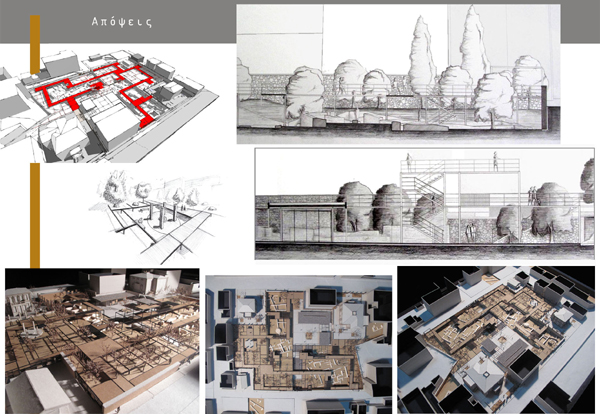
Taking into consideration the future excavation which will take place in the site, and finally the revelation of the whole byzantine district, we were led to place a metal frame, with open and closed parts based on the excavation grid. The frame will extend above the archaeological findings and above the not excavated sections. That will enable everyone to visit the site during excavation or restoration at the lower level. The ability to change easily the route, by moving any pieces of the metal construction and forming a new one, in a way that at any time serves the visitors and the excavation process, was an additional reason for choosing the frame.
This archaeological site is intended to have an educational aspect.
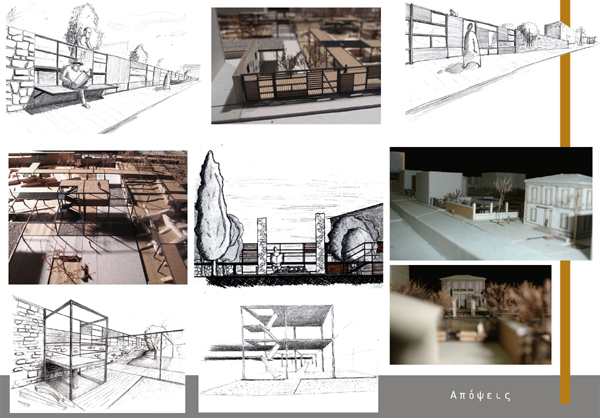
Our aim was to create a site where visitors get to take part in the whole process instead of only observe. Give them the opportunity to get familiar with the archeology, from the moment some-thing is being found through all the way until it becomes an exhibit.
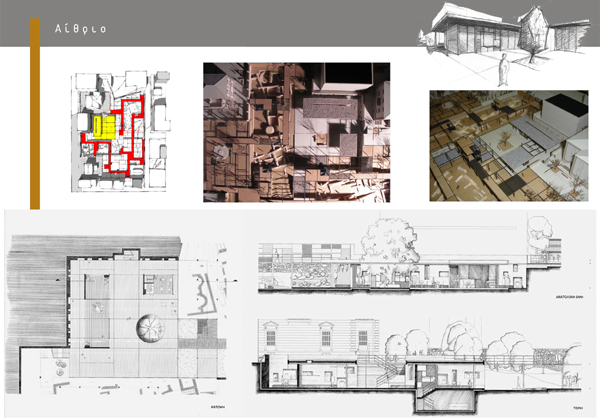
As more sections will be excavated the metal frame will keep changing so it can continuously offer a route at the upper level, and sun protection at the lower level for those who prefer to take a walk among the archaeological findings.
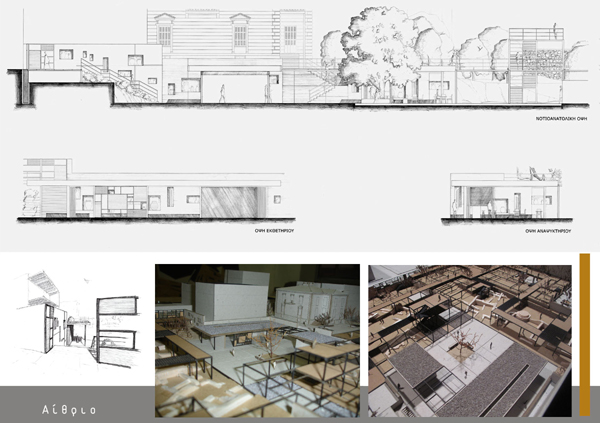
Except of the archaeological walk we designed a public gathering space, with a small exhibi-tion center and a coffee shop. These two were chosen to be put in the lower level , the natural level of the remains, mainly in order the visitors to get more familiar with them, cause although plenty of them are scattered in the urban web people don't treat them as an organic part of the city.
